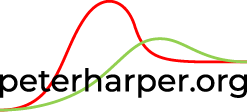Compost Systems
"Compost" is the magic heart of gardening, and I must confess to having been somewhat obsessed by it.
Of course you can buy compost in bags, but my approach has always been that it should be seen as a waste-reduction and recycling process as much as an aid to plant growth, so any household with a garden should roll its own.
Unfortunately in the early years of organic gardening another approach was taken, with elaborate recipes and procedures often using bought-in materials, that did not easily fit the waste production patterns of everyday life. In my local environmental circles in North Wiltshire in the 2020s there was great concern about the use of peat in composts, and I suggested that the fibrous nature of paper and cardboard, if added, could produce almost perfect ‘peat-like’ effects, but without the peat. But you’d have to do it yourself.
Composting at home 2022
We first discovered the many benefits of paper and cardboard at at CAT in the 1990s. A summary of our trials and adventures is
Compost Tales 1998 (doc)
Some illustrations of the resulting 'High Fibre Method' are shown here:
Home Composting using the High Fibre Method 2002 (ppt)
Details of processing some of the more unspeakable household wastes are found here:
Composting Yourself 1996 (doc)
The High Fibre method deals with most household arisings, but not woody wastes from the garden. These days the Council will normally collect difficult garden wastes, but if you want to do it yourself, here's how:
Composting Woody Materials 2002 (doc)
Woody Waste 2007 (ppt)
In principle, anything organic can be composted. Somehow I acquired some old books which had no ‘value’, so I decided to try and compost them by marinating in urine (in the garden, easily topped up). It took about 18 months, but produced excellent crumbly brown compost with no odour. Perfect for house-plants.

